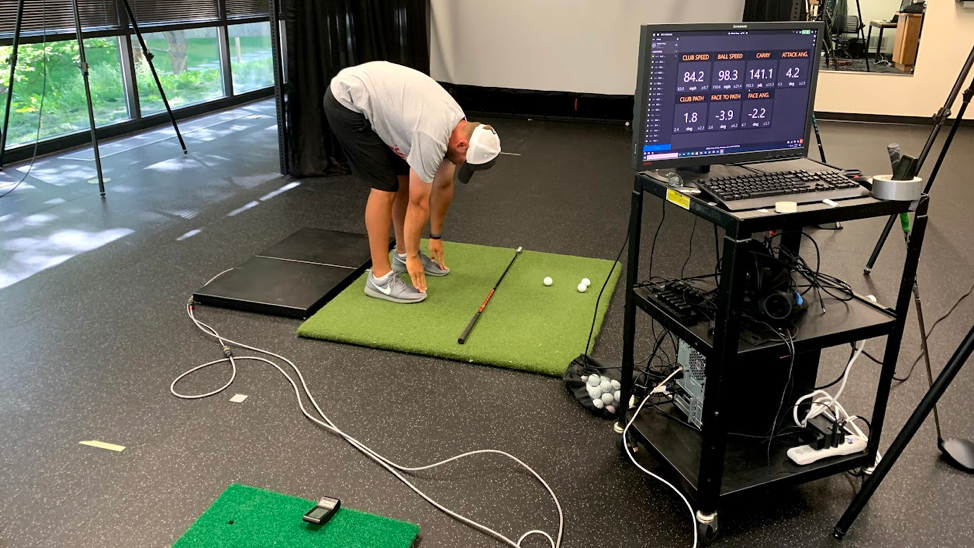In the sport of golf, the ability to hit the ball farther is never a bad thing. Thanks to research conducted by Utah Valley University’s Professor Tyler Standifird and his students, there may be a new answer for adding length to your tee shot.

In the sport of golf, the ability to hit the ball farther is never a bad thing. Professionals and amateurs alike spend incredible amounts of time and effort training their bodies and analyzing their swings, all for just a few more yards of distance.
Thanks to research conducted by Utah Valley University’s Professor Tyler Standifird and his students, there may be another, less obvious answer for adding length to your tee shot: train by leading with your non-dominant hand.
“This is the best time to be in golf biomechanics, because it's exploding right now,” Standifird said.
Standifird and his students, with the assistance of the training and equipment company SuperSpeed Golf, studied 10 golfers as they practiced swinging using their less-natural hand 39 times, three times a week, for six weeks. The UVU team was able to capture and study various metrics like swing speed and weight transfer between legs during the swing.
At the end of the six weeks, the study participants had increased their swing speeds by an average 6.4 miles per hour — and a faster swing means the ball travels farther.
“It's cool to see that they not only got faster, but also their biomechanics improved,” Standifird said. “They became more efficient, more powerful as a result.”
Standifird’s work has been covered by national golf publications and even professional golfers — research from another study, in partnership with Garsen Golf, is now being utilized by Utah native and PGA Tour pro Tony Finau, who won back-to-back tournaments in July.
At UVU, Standifird and the entire exercise science department make sure their students get plenty of experience applying what they learn in the classroom by testing real athletes, including the Wolverine women’s volleyball, women’s soccer, and men’s basketball teams. Even as undergraduates, UVU students get to author papers and conduct research that puts them ahead of the curve when it comes to future opportunities.
“The unique thing about working with Standifird and the other professors in the exercise science department is that they allow their students to take full control of the research projects,” said UVU exercise science graduate Spencer Rasmussen. “This form of mentorship and guidance doesn't happen too often in other research labs, and it helps create a sense of autonomy and greatly increases the confidence of the students, allowing them to be independent and figure things out on their own.”
According to Standifird, being able to support students and let them lead is what drew him to teach at UVU in the first place.
“What I love about UVU is I can train up these students, and then they kind of become the shining stars of our research lab,” he said. “I can bring them an idea, or they can come to me with their own ideas. That’s the best scenario.”